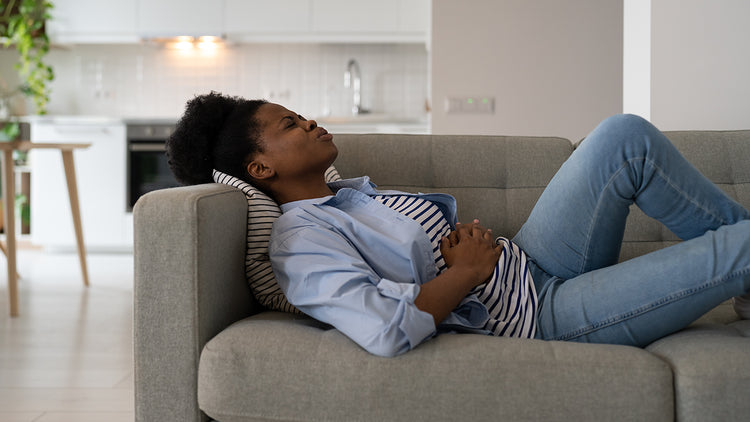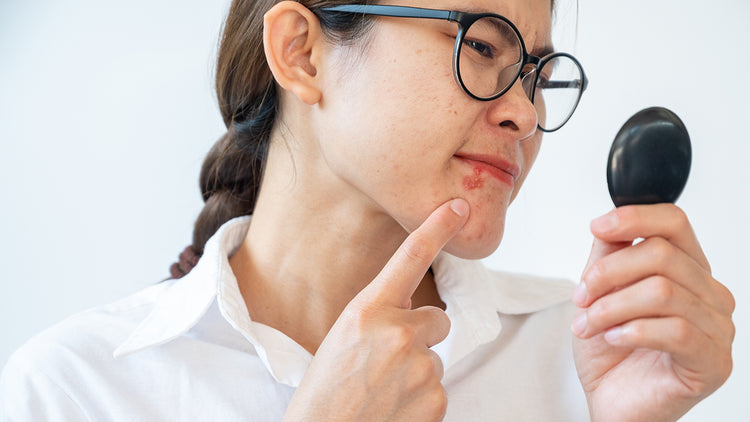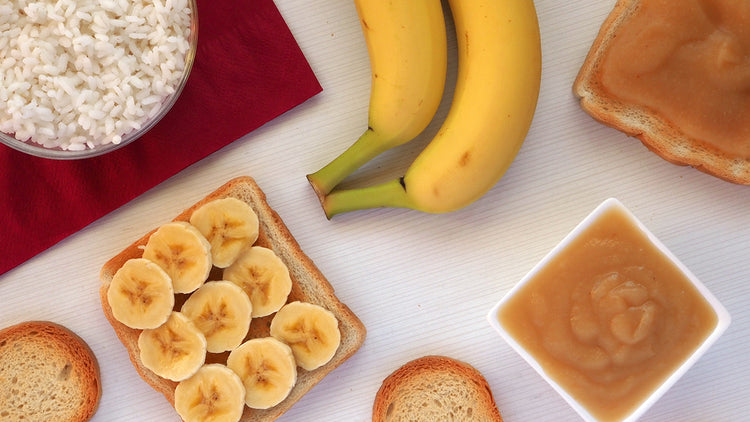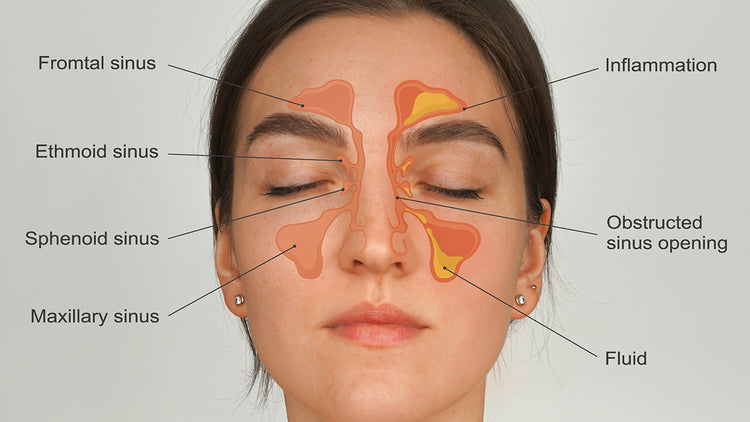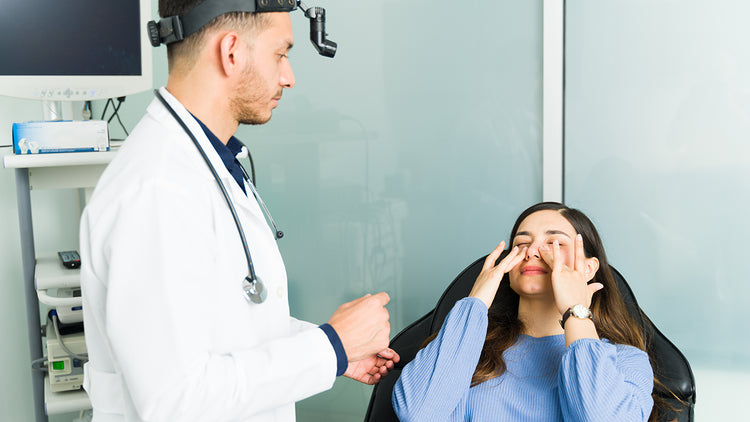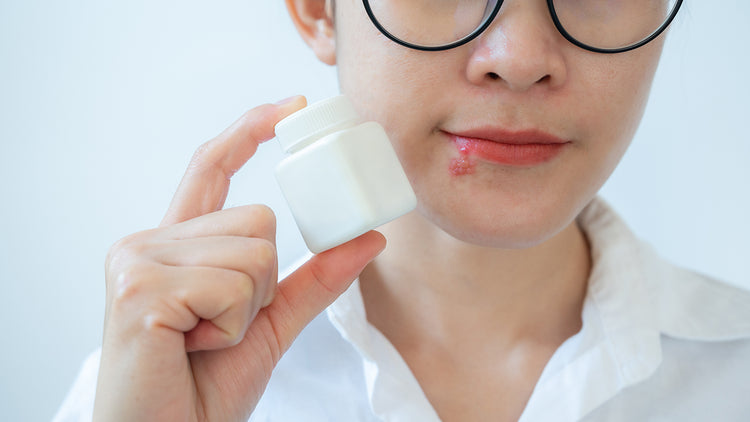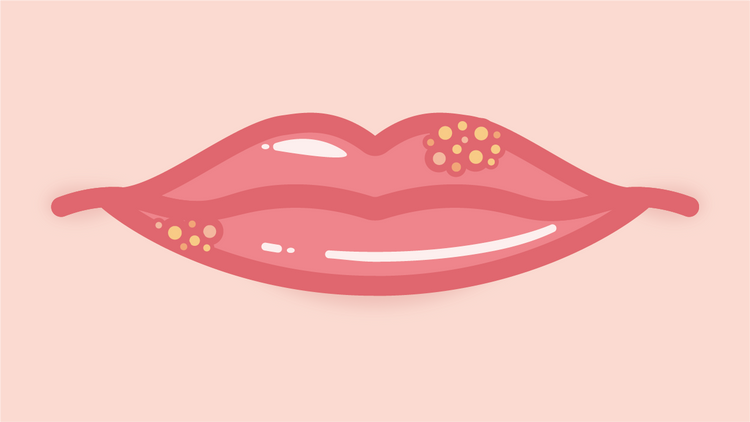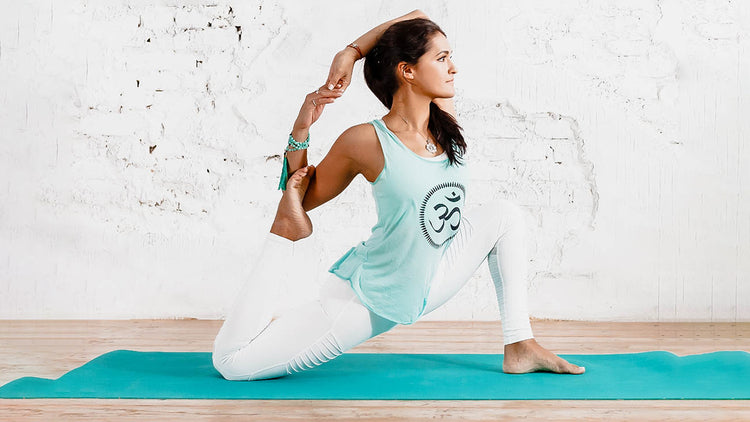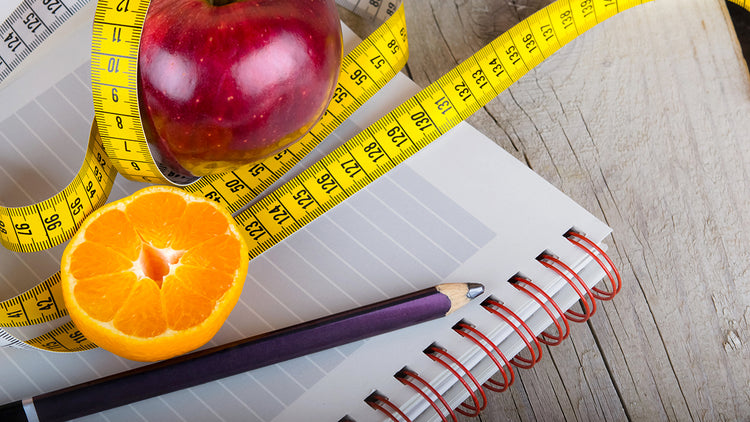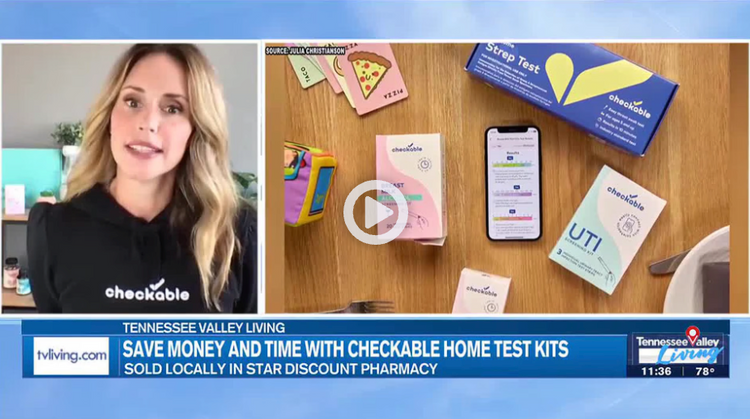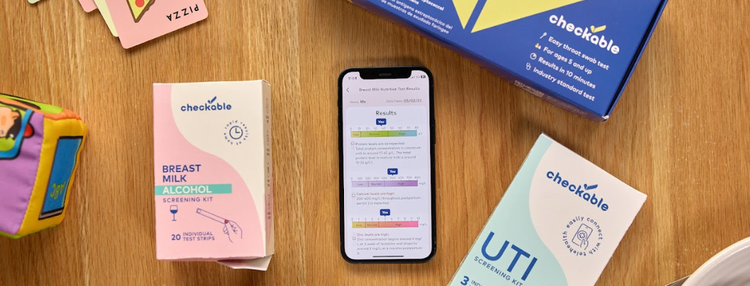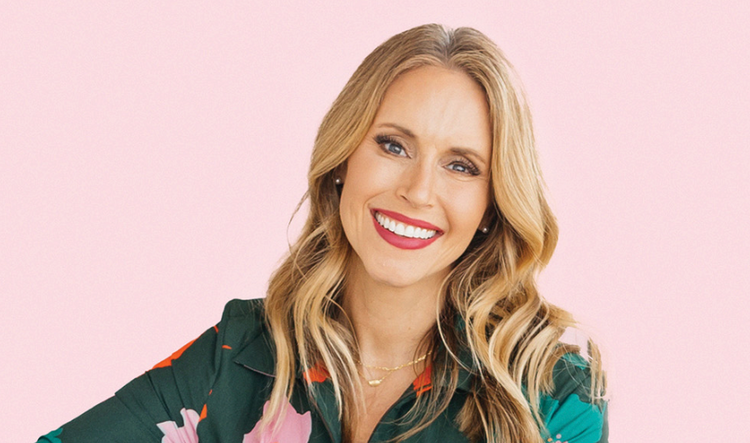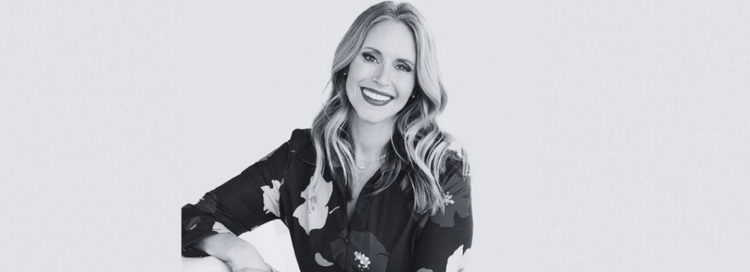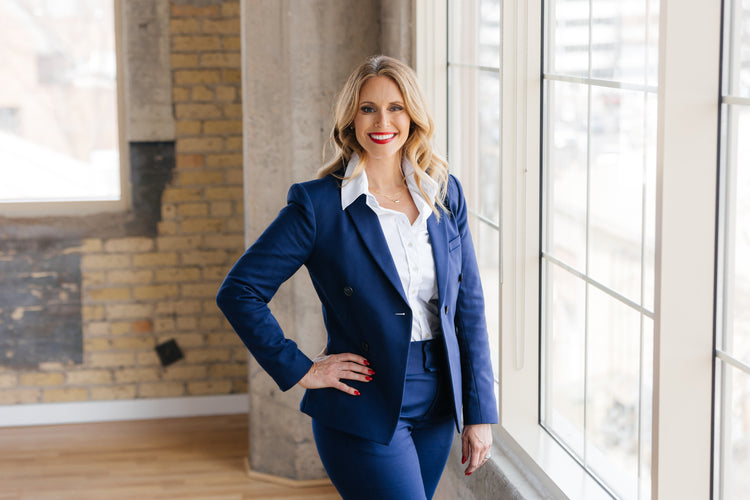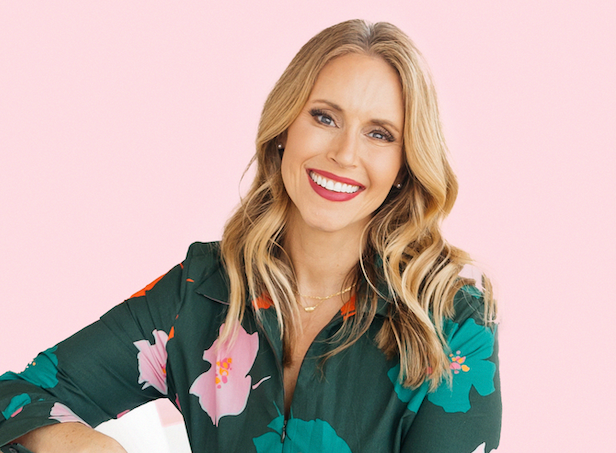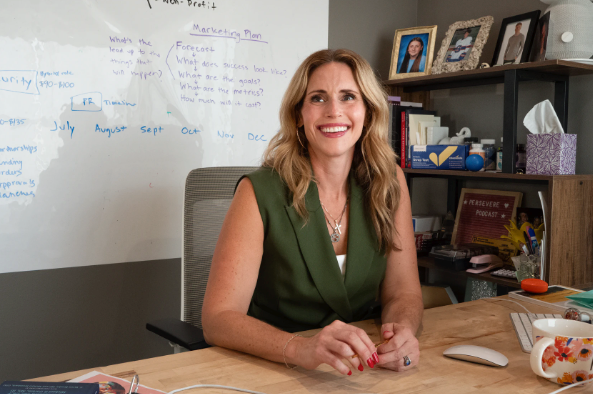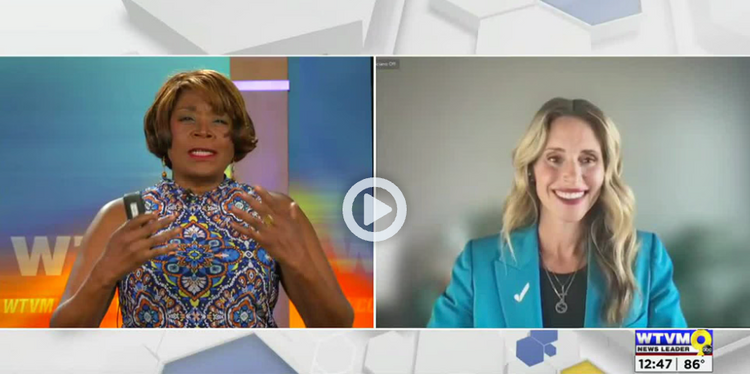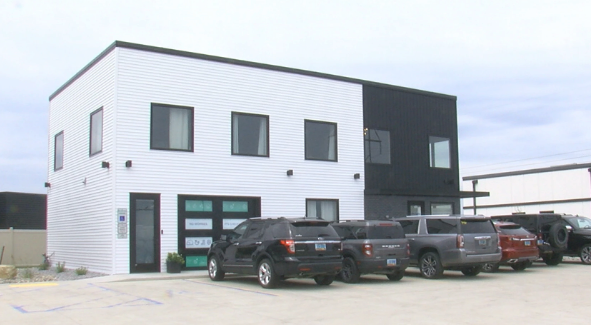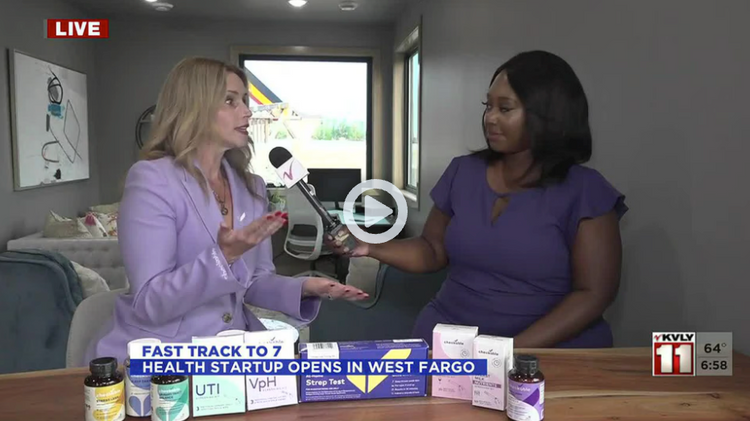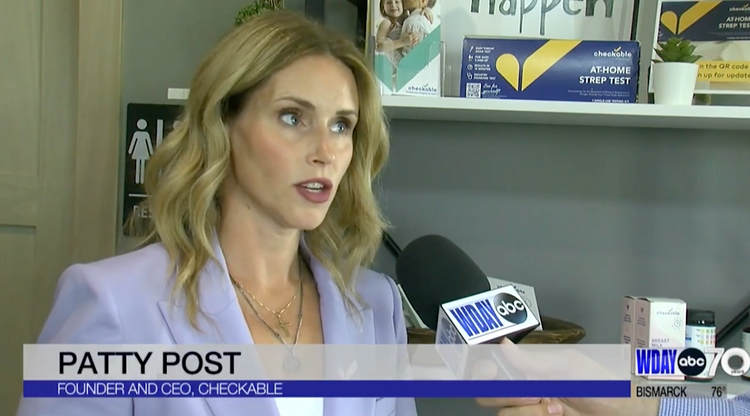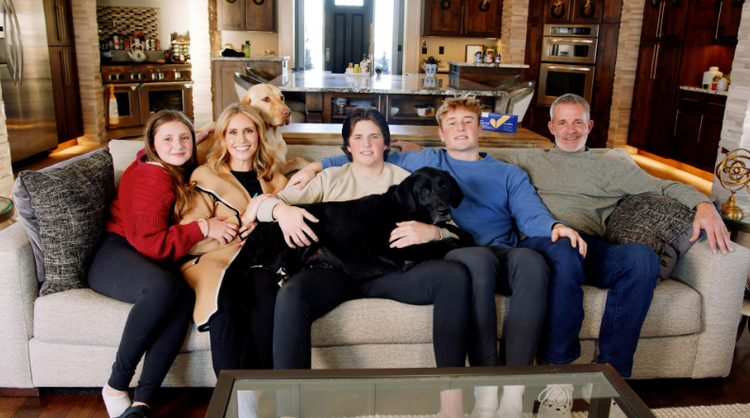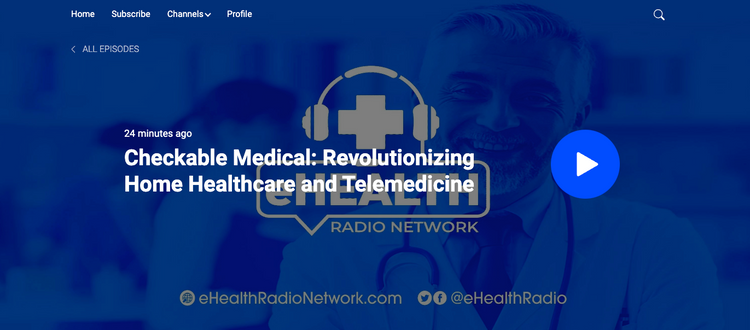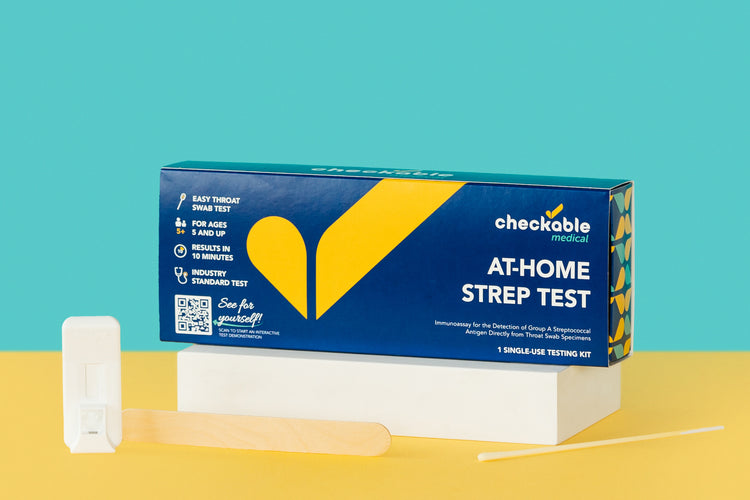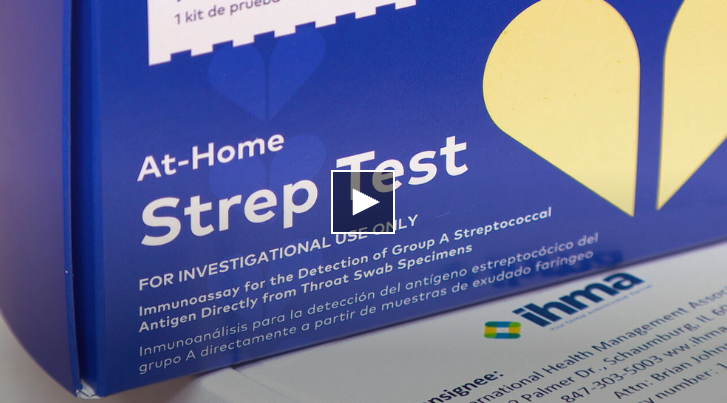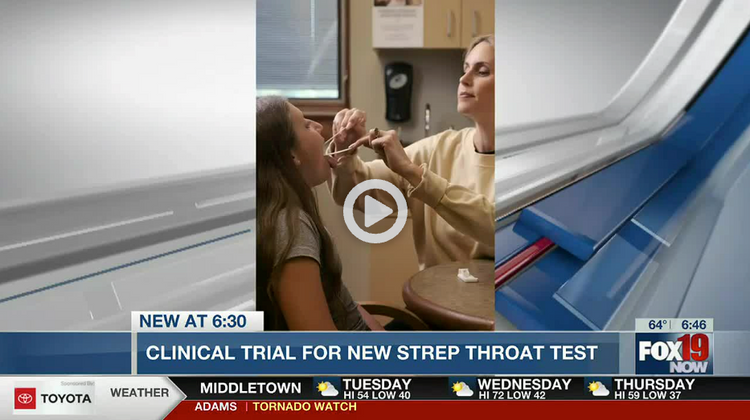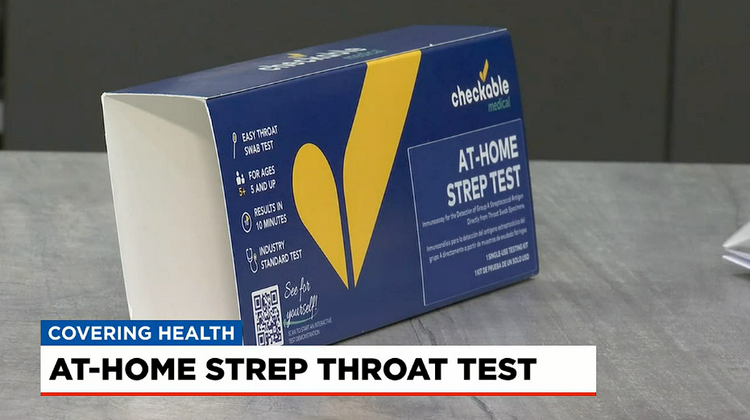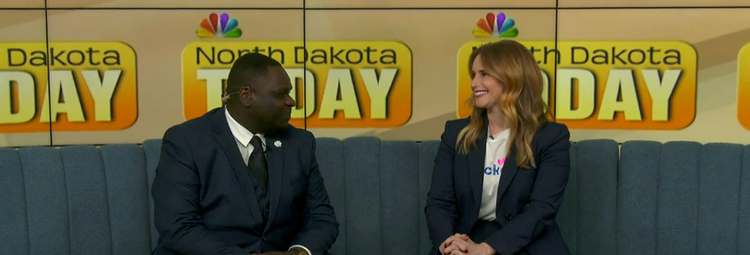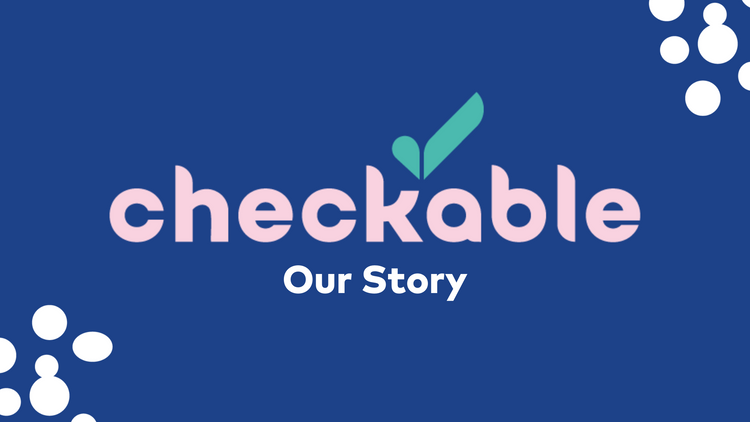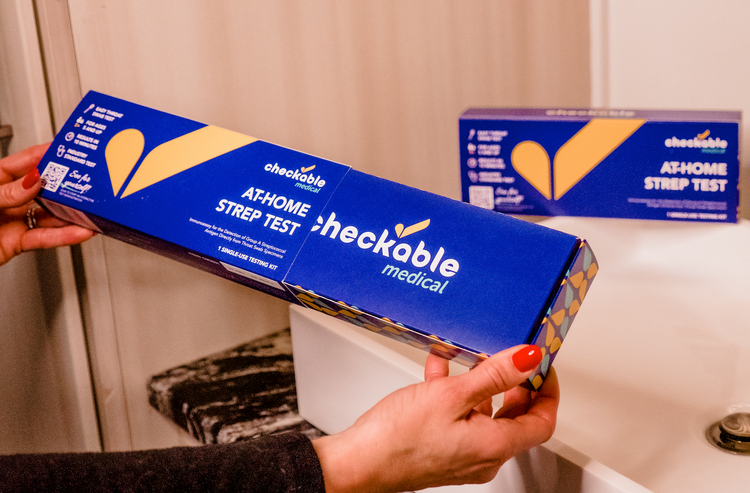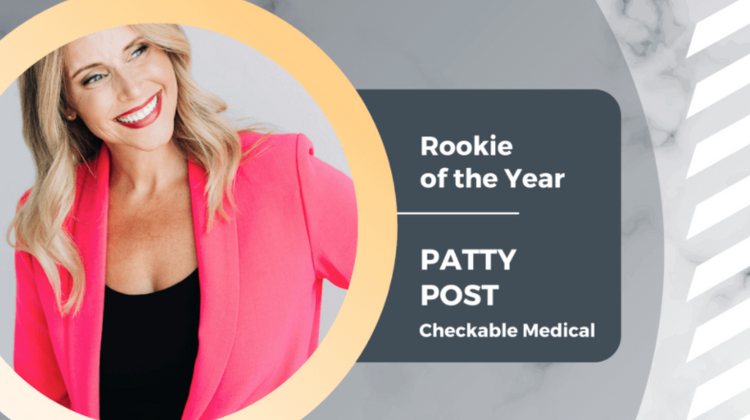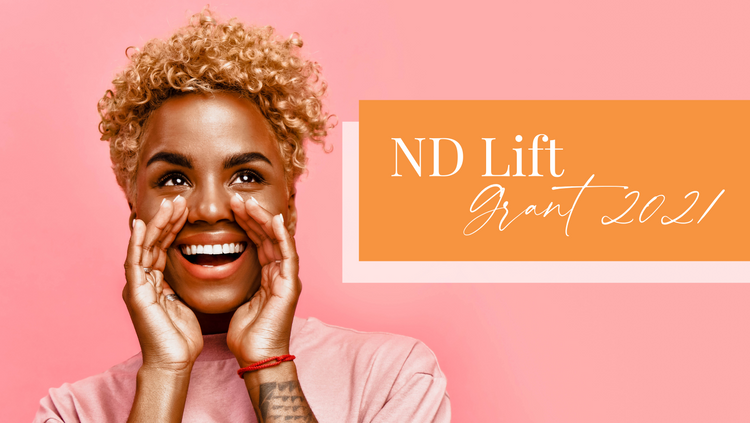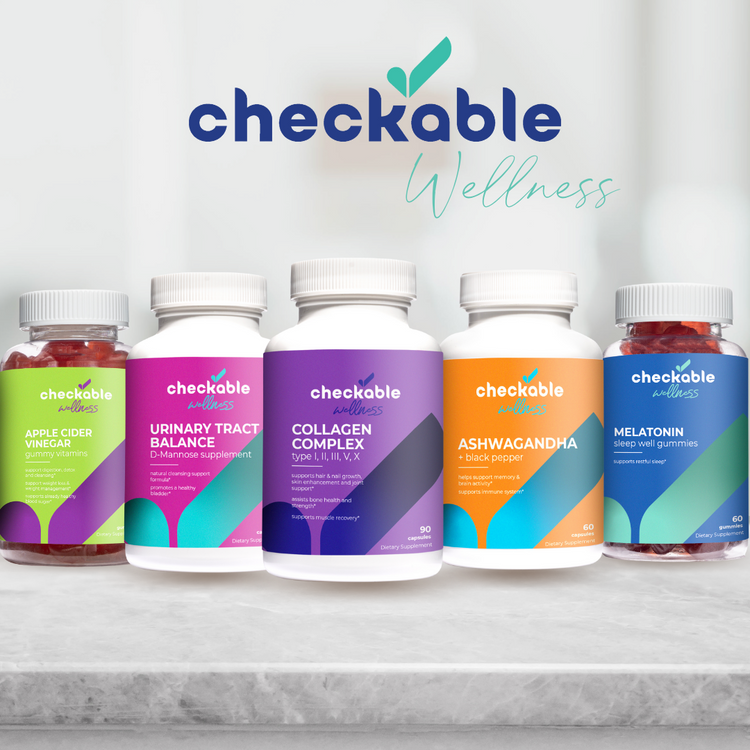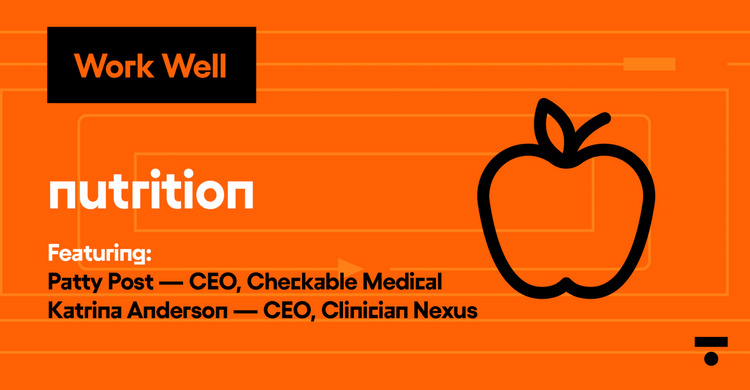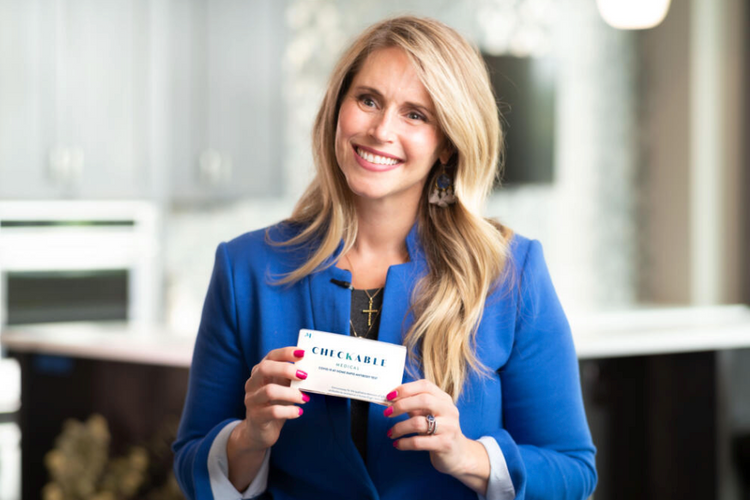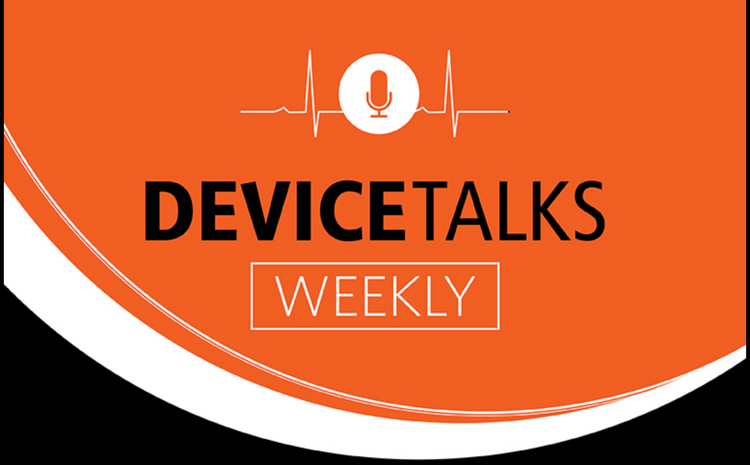
Dr. Angela Turnow helps women with pelvic floor and core issues feel strong and supported for active motherhood. Inspired by her own experience with prolapse and leakage after the birth of her first baby, she turned her pain points into an opportunity to help herself and other women find freedom and relief. Through her free support group, Bladder Leak Solutions for Active Moms, she gives moms community, connection, and confidence so they can heal naturally and live an active life.
In part 3 of our series with Dr. Angela Turnow, we cover topics that we should consider that may slip through the cracks, such as the hidden cost of bladder leakage and how to save on them. Also, we dive into the mind-body connection and how it can be used as a tool to help you find relief. Finally, we discuss how active women can find relief to continue to do the things they love to do.
Catch up on Part 1 and Part 2 with Dr. Turnow.
Key Takeaways
- Hidden costs of bladder leakage
- How to avoid quick fixes or bandages to get to the root of the problem
- How to tune into our bodies and listen to what they’re telling us
- How can we be aware and prevent normalizing bladder leakage
- How we can use the fundamentals of movement to heal
For more resources, check out our website.
Connect with Dr. Angela’s free online community.
Learn more about Dr. Angela on her website.
Connect with Checkable:
Facebook
LinkedIn
Connect with Patty Post:
LinkedIn
0:00:00 S1: Today on part 3 of our series with Dr. Angela Turnow, we share on topics that we should consider that may slip through the clips, such as the hidden cost of bladder leakage, and how to save on them. Also, we dive into the mind-body connection and how it can be used as a tool to help you find relief. Finally, we discuss how active women can find relief to continue to do the things they love to do.
0:00:31 S2: Welcome to the Wellness Essentials Podcast, where we invite you to join the conversation and get inspired to be in the driver’s seat of your health and well-being. On this podcast, you'll get an all-access pass inside the minds of MDs, experts and thought leaders in the industry. No topic is off-limits, and we're asking the questions to get you the answers across the gamut of topics when it comes to optimizing your health. This is the WE Podcast.
0:01:09 S1: Thank you guys for tuning into part three of this incredible series where we're doing a deep dive into bladder leakage, the pelvic floor health and everything that comes along with that with our incredible guest, Angela. And last week, we talked a lot about what is the reality of the pelvic floor and the myth of leakage as being our reality, and knowing that this really isn't our reality, so, Angela, do you wanna kind of recap what we talked about last week?
0:01:42 S2: Yeah, absolutely. So a lot of women, moms, think that bladder leakage is normal, that it's just part of motherhood or getting older, something they have to live with, and in my clinic, I do sometimes work in a clinic still, but my online business is really where I thrive with the bladder leak solution, but the beauty of that is that I've been able to research with people in clinic and what I find a lot is if I ask if everything is normal, the answer is yes. And then when I ask more about that and I'm like, “Okay, well, what is normal? What do you think is normal? Do you leak when you sneeze, cost, laugh, run, jump…” and the answer is typically always, yes, obviously. Yeah, it's just normal. Okay, well, that's not normal. So, if that's something that you want to fix, then we can talk about that.
0:02:38 S1: Yeah, that was such an insightful episode, and if you guys haven't tuned into part two or even part one, definitely check those out 'cause they kind of are leading up to this third part, this conclusion here, final episode, where we're gonna be diving into things that may slip through the cracks that we don't know about the pelvic floor health and bladder leakage. So, let's do high level, what are some of these things that we aren't maybe recognizing with that.
0:03:09 S2: So, I think part of this too is looking at how you're approaching fixing it, just, I think we kinda talked about this in part one and part two, but I'm just gonna do a high level overview of that, which is kegels typically won't fix it, there's other things like, I've seen a pelvic floor throne, I don't know if that's the right word for it, but basically it's like this fancy chair that you can go and sit on. I think it costs something like 200 or 300 dollars per session. You sit on it, it stimulates your pelvic floor and somehow that's supposed to fix it, and you're not having your issues when you're sitting, you're probably not having your issues when you're laying on your back doing kegels, it's like when you're up and moving and jumping and moving too quick. I hear that a lot, “if I move too quick, I’ll leak”, and so it's looking at the dynamic-ness of your body, and it's not just one muscle at play, it's how all of them work together, and so that's why kegels typically won't work, that's why bladder sling surgery typically won't work, it'll work for a short time, but unless you get therapy after that, unless you get really specific direction on how to prevent it from coming back, it probably will because it's more or less just a bandaid, so that kind of holds things up and in fact, bladder sling surgery has a 58% fail rate.
0:04:30 S2: So, what you really need to do is get somebody specialized in pre or postpartum or the pelvic floor, and so that they can really direct you on what you need to fix it because that’s just it, you can't just put a band-aid on it. If your ceiling were leaking, you wouldn't just put tape over top of it, you need to get in there, figure out why you're leaking, why you're sealing this dripping in the first place, and that's how you're gonna fix bladder leakage and as far as, what are the things that are overlooked? Okay, well, your pelvic floor, it's inside of your pelvis, right? These are the muscles that you sit on, and they are every bit as important as your abdominal muscles. They're every bit as important as your hip muscles, your butt muscles on the outside, and so those things are not working together, then there are going to be big issues and we can talk about that because I think a lot of people do overlook that. So, one in three women report pelvic floor symptoms as a major barrier to exercise. That means that those women typically aren't working out, they're not being active.
0:05:42 S2: And then if you think about all of the subsequent issues with that or all the subsequent things that can happen because of not living an active lifestyle, increased risk of cardiovascular disease, higher blood pressure, depression, anxiety, osteoporosis. When you get older, weight gain, and so when you go to your doctor, typically, if you're overweight, what are the recommendations?
0:06:06 S1: Lose weight. Be active.
0:06:07 S2: Right? Diet and exercise, right? But if you go back to, well, sometimes I'll ask people, I know that I need to lose weight, I know that I used to be active, and I kinda ask them, I'm like, “Well, why did you stop? Why did you stop being active?” And some of them, they're like, “Well, I was leaking”. And some people don't put that together because it's been so long, but if you're uncomfortable when you're working out, like why would you want to? Like why would you want, if you're uncomfortable doing that. So looking at bladder leakage as just a barrier to exercise and then why do we need exercise? Well, we need exercise so that we are healthy in every aspect of our life, every aspect of our life you know? Not working out increases your risk of stroke. You have sleep problems if you're not active, brain fog, fatigue, you can have more pain, right? And that's not just from not working out, but also because your muscles are not working well together, I talked about, people know that they should have strong abs or do ab workouts to have a strong core.
0:07:16 S2: Well, your pelvic floor, we talked about this in episode one, that's the face of your core. And so if you're not considering your pelvic floor when you're doing ab workouts, they might not be effective for you, and in fact, they might be making your abdominal separation, your belly actually get bigger because you're not managing your pressure well. And that is exactly what I work with my clients on is making sure that they're doing, I'm a big fan of working smarter, not harder, like it shouldn’t, you shouldn't have to work out for hours to get results. So, if you're not using your body effectively, again, if we're talking about leaking, but really it's like if you're not working out, your muscles aren't working well together, the hips, the butt muscle, the abs, the pelvic floor, you're gonna have things like back pain and hip pain, and then they go to this doctor and that doctor and this specialist for your back or hip pain, which may or may not get better, and then maybe you try physical therapy, but it didn't work, but maybe it didn't work because you didn't actually think about the core, the root problem, which could be the pelvic floor.
0:08:19 S1: This is so true, and it kind of becomes like a cyclical, like it becomes one thing affects the other, and then it goes back and forth, and then other things come into play and reality, it all started from that fear of leakage during physical activity or moving your body, your core, your muscles, all parts of your core, including your pelvic floor muscles become weaker, and then the problem persists and instead of working on, okay, how do we make those muscles specifically stronger or work together better, then, yeah, that's where the aha moment is that is, like that is something that I wouldn’t associate, it's like I'm doing my kegels, I'm doing my abs, I'm doing what I think is right, but I'm missing something and is that whole base of that pelvic floor for sure.
0:09:07 S2: Yeah, and then as you get weaker, because you're not being active as you get weaker, which as you get older, you do lose muscle mass anyways, even despite your best efforts, and so if you're not being active, then you're getting weaker, things are getting harder to do, so you're having to do things like hold your breath, bear down, strain, which increases your risk of an abdominal hernia, increases your risk of a disc herniation or back, a back injury and increases your risk of pelvic organ prolapse, which is very, very uncomfortable, and I do help clients with it, but at some point it's like, you don't want prolapse. I can help people with it, but it's definitely something if you can, you want to avoid, and so you want to be strong in the right way, making sure that you're using your body efficiently, and even if you are, so maybe you're in this boat, maybe you're like, “Well, I'm leaking a little bit, but I'm continuing to work out, I'm just gonna push forward, I'm gonna move on despite the fact that I am leaking and I'll just wear pads”. Well, your body is telling you there is a breakdown. So that will only get worse and you're opening yourself up to injury, because basically the leaking is just telling you that things are not coordinated together, which makes other parts of you work harder.
0:10:33 S2: So now maybe you’re gonna have knee issues or IT band syndrome or sciatica or discomfort when you're sitting, or pelvic heaviness or back pain, so you can't just bulldoze yourself forward thinking, I'm just gonna continue to work out and just wear pads because you really still need to figure out why it's happening and it might, it's really very simple, get your body to work efficiently and then you can do whatever exercises you want, it's not about this one exercise is gonna fix you, it's looking at how you're doing the exercise.
0:11:07 S1: Yeah, it's like kinda getting back to the basics, like the fundamentals of the movement that we want to be producing in our bodies with each exercise, and this is really intriguing too, 'cause I've taken some different yoga practices that talk on this deeper level about how are we moving our bodies and how is that relating to what are we feeling in our bodies and our bodies talk to us and what's been kind of ingrained in us over the years is to throw a bandaid on it, whether it be a pad or something, or a pill or whatever, we're kinda told, just throw something over it and keep going, especially as moms we’re like, we need to just be able to keep our kids alive, and in turn, we kind of let ourselves down, let ourselves go in a way and let things go for so long without addressing them.
0:11:58 S2: Well how powerful is it if you take care of yourself? And it does not need to take more time because the strategies that I teach my clients are very, very simple to fit into your day. It's like, “Okay, you're gonna empty the dishwasher. Let's talk about how you can make that work for you. You’re gonna stand cooking in the kitchen, let's talk about how we can make that work for you.” So you are rehabbing your body with these day-to-day things, you're gonna lift your child and put your child in the car seat, that's kind of like doing a kettlebell swing. So, let's make that work for you and teach you the strategy so that you know how to work the most efficient way, and you can be strong so that you can continue doing the things that you love, and when your children see you being active and taking care of yourself, the ripple effect of that for your kids and for, if you're married, for your marriage. The other thing that comes with bladder leakage is if you are not feeling confident in yourself, that is going to exude in other areas of your life, for better or worse, if you're not confident in yourself, you're gonna have...
0:13:15 S2: Maybe you're having poor stress management strategies because you maybe have lost a piece of yourself or you don't feel like yourself anymore, and then if you're not sleeping, there's the brain fog and the fatigue, and how strong are you gonna be able to show up for your family when you're feeling that way.
0:13:33 S1: You said it so well, it's not just about the one problem, it's the whole, the holistic approach, like how is this affecting our bodies as a whole, again, sleep’s affected, workout is affected. Whereas harboring fear because of it, in a lot of ways, and that's another thing. It kind of brings me into my next question. We talk about this on a holistic level, can you go into how can active women, how do they find relief, how can they give back to those activities through what you're teaching? You’re gonna be teaching the fundamentals, teaching us how to get back to ourselves again.
0:14:13 S2: That's a difficult question because it is so unique to the person in front of me. So for example, I could have, and I have done this many, many times. I have one exercise, I have lots of exercises, but one particular exercise, I might give it to you for this specific thing that we're focusing on, and then I give the same exercise to somebody else and we're focusing on a different aspect of it, so I really tailor the exercise and the need for what you need, because that's where the power comes in, and that's where it can be very simple to fix is if you are getting that specific direction, but if you're just following a generic program or you're just looking at videos on YouTube or going to a work-out class that's kind of intended for people that are at their highest level functioning correctly, then that may or may not work for you. It's kind of like after somebody has an ACL surgery, maybe they wait six weeks, and then with the surgeon, just tell them, “Okay, go back running”.
0:15:20 S1: No. A lot more to it.
0:15:22 S2: There’s so much more to it, right? And if that person did not get direction, specific direction on what they need, if they just ease back into running and they're like, okay, I'll run one mile, two miles, three miles, that surgery might fail, or they might have other things like maybe their other knee will hurt or their hip or their foot or whatever right, plantar fasciitis, just different things would probably pop up, and so it might not happen right away. Initially, it might be more or less fine, but later, there’s probably gonna be issues, and that really is no different for moms because having a baby, any way you get that baby out, it's a major deal for your body and looking at pregnancy, all of the changes that happened to make room for that baby, and so every person, every birth story is different, and so it's looking at what you need, and again, you wait that six weeks and your doctor is probably like, “Okay, you're good, green light, go exercise, listen to your body”, but if you don't know what to listen for, then that can make that tricky, and if you don't get specific direction on how you should be rehabbing, then that can also be tricky.
0:16:41 S1: That's such a good point. It's like earlier I had mentioned, tuning into our bodies, but we also, understanding the language our bodies are telling us, that's where people like you come in who can help us find those answers, 'cause a lot of times on our journeys, it's like we get this information bit by bit like, “Okay, my body's telling me this, now I understand that”, but if we haven't tune into our bodies before and now we just are having this leakage, it's like, “Okay, I don't know what's going on. Next step would be, see my primary care, and then they tell me, this is just part of life”. So this is a really great nugget of advice for ladies listening, you guys this is like liquid gold. I'm learning so much from this podcast too. Actually, brings me into my next topic is we talk about the things that we could end up going down a rabbit hole and spending a lot of money unnecessarily, whether it be surgeries or even just pads, products. Can you talk about some of the hidden costs that we're getting into with this?
0:17:46 S1: Yes, absolutely.
0:17:47 S2: So, if you don't know what to look for, you might be putting too much emphasis on something that doesn't matter. So I've seen this with some current graduating clients, actually, it's exciting. All my clients have awesome success, but she was trying to fix it herself and doing these pelvic floor rehab type courses or programs, but putting too much emphasis on things that she didn't need to, and so then it would kind of almost slow her down because if she didn't get that one thing, then she didn't wanna move forward or she kind of felt paralyzed because she, she couldn't master this one movement, and so looking at it at a different way, I was able to really help her get over that hurdle, and now she's back running, right, she's back running and she's living her best life. So looking at the hidden costs, it's like you can spend all this money on programs, on products, so on average, women spend 1,400 dollars a year on pads. That's a lot of money. In one year, yeah.
0:18:54 S1: I could think of so many other things I wanna spend that money on.
0:18:58 S2: Right. Yeah, exactly. And then you look at, I talked about low confidence, then maybe you’re not sleeping great 'cause you're not as active, so now you have more things like brain fog, fatigue, so what things would you maybe spend your money on with brain fog and fatigue? Caffeine, things to boost your energy, medications, or maybe because you don't feel good in your body, your body just feels sluggish, or you just feel tight and achy and really when your body, when your muscles are not working right, you're probably gonna feel tight, like your hips are gonna feel tight, you have more back pain, and so then maybe you go to the chiropractor or the massage therapist, and so you're spending money on that, and there is a difference between I need to go to the chiropractor because I cannot live without that versus because it feels good, right? And if you're going because it feels good once a month or whatever, like, okay, but I never want people to feel like they have to go because you literally can't function without that. Does that make sense?
0:20:08 S1: 100%. Yeah, it kind of again becomes a band-aid in a way. I had interviewed someone in the past too, that talked about the very same thing, their PT, and they had mentioned, I don't want you to have to come see me a whole bunch, I want you to come see me get what you need and then move on with your life, like graduating, like you said, you're graduating your clients rather than, “Okay, I'm gonna have to go see you”. Not that I don't wanna come see you, but I would have to go and invest for the rest of my life, but no you're giving people the tools to use in their life now and heal.
0:20:41 S2: Exactly, and it's very specific to how you want to live your lifestyle, right. I just talked about previously using day-to-day tasks for your rehab, but then if you wanna get back running, okay, let's talk about that. Let's talk about how we can get you there. What specific steps do you need, and if things come up in the future, 'cause I'm not, things come up, like maybe you have a little set back, but let's teach you how to move through that faster so that you don't need me in the future, so that you know how to rehab yourself, you know the things to preface and some of the things that you can do, and that's the thing that I teach people, is how to manage your own aches and pains, not that you're going to have them, but you might and when those might come up, we talk about when those might come up and how to move through that faster, and so some of the other things that you might spend money on too is like if you have back pain, you might think, “I need new shoes”, or “I need a new bed” or all these different things that people kind of latch on to is like, I need this thing...
0:21:48 S2: This is the one thing. This is the thing that will help me, right? And it's like if you don't take care of your body and you can't just, it's not just about exercising, it's about moving in a way that is safe and effective, and so that your muscles are working the way that they were intended, so that you don't have issues later.
0:22:07 S1: Oh, that's incredible. I think that, again, it's like coming back to that simplified approach, like using our own bodies to our advantage, teaching our bodies how to work, how to move and efficiently heal themselves in a way, and I think that's really huge, and I kinda wanna dive into kind of the pièce de résistance, I totally butchered that, but you know what I mean. Kind of like the cherry on the top of what you do, which is something that I love this topic. The mind-body connection, and we've touched on it throughout this three-part series, and I really wanna share how your program is different because of the integration of this holistic mind-body approach.
0:22:47 S2: I love this saying. One of my coaches has really ingrained this in me, but take care of your body and your brain will thank you. Take care of your brain and your body will thank you. So it's how the two work together, and so what I want you to do right now, I just wanna use, I wanna do this little, this little experiment. I want you to take a big breath. Anybody listening, take a really big breath right now. Big breath. Take a big breath. So if when you took your big breath, it went up into your chest and shoulders, if that's how you took your big breath, then that is going to put you into that sympathetic nervous system. That's your fight or flight. That's going to release cortisol, that's going to, if a tiger is chasing you, that is a good thing because it's gonna ramp you up, but in day-to-day life, there are no tigers, but our bodies do not know that, so if you get stressed answering emails or the kids are pulling at you or you’re home from work and you're trying to cook dinner, get laundry, get the snacks or the TV, or like take…
0:23:58 S2: Whatever the umpteen things you’re trying to do at one time, if you are in that heightened state, it's going to impact your body, it's going to create more tension throughout your muscles and throughout your pelvic floor because your pelvic floor is your guard dog, and there was a study done that when women walked down dark alleys, it's those negative emotions, the anxiety, the worry, maybe not overwhelmed, but those negative emotions, in this study, women's pelvic floors were more tense.
0:24:28 S1: That makes sense. It's like almost like you're protecting yourself, you're tensing, I noticed too, I lift up, I stress and then that just channels that stress.
0:24:40 S2: And if you're a jaw clencher, you're typically a pelvic floor clencher because it's the two ends of the system, and so learning how to regulate your nervous system, that's really what we're talking about here, learning how to regulate your nervous system and calm down so that you can live in more of an equilibrium state and your body can work more efficiently. Another example of this is if a car is gonna hit you, this is kind of an extreme, but if a car is gonna hit you, you gasp up, right? That is a response that is ingrained in you, that is ramping you up for a fight or flight, a get ready kind of a thing. But if you can recognize that and then use that, not in that particular situation but life, you can use your breathing as a backdoor into your mental health and into helping your body, but it's not just about, I have clients that'll say, “Yeah, I do breath work, I know what you're talking about”, and oftentimes, they don't. They don't know how I'm explaining it. Okay, and so the way that I use breath work is with exercise and very...
0:25:51 S2: I'm looking at the mechanics of how you're breathing, and so for example, if you're thinking of breath work as I breathe in for three and I exhale for this count or like a counted type of a breathing, that's kind of like a running program where you run for three miles, and then on this day, you run for four miles type of a thing, but what I'm talking about is the mechanics of how you're breathing, kind of like the mechanics of how you're running. And so again, your pelvic floor is the base of your core, and on episode one, I talked about how your core, I think I mentioned this anyways, that your core is like a balloon, and the bottom of your core, the bottom of your balloon is your pelvic floor, the top is your respiratory diaphragm, and the surrounding sides are your deep abdominal muscles, and so if your balloon is contorted because of tightnesses or muscle weakness or positioning, and that comes from pregnancy, and that comes from not rehabbing postpartum in the right way, you literally can't breathe the correct way, and it is a good design that you can breathe lots of ways. That is a really good design because we need to breathe to live, but if you are not positioning yourself, when I say breathe into your pelvis, if you're not doing that, then you're really setting yourself up for issues later, and it's not belly breathing..
0:27:20 S2: What I'm talking about is not belly breathing, it's breathing with the entire diaphragm, breathing with your pelvic floor. In a way that most people, when they are doing this, they'll say, “Wow, my abs hurt, my abs are working”, and I'm like, “Well, yeah, when you do it the right way”.
0:27:37 S1: I'm just so intrigued with this, I'm so fascinated by this because it's again, something that is simple yet un-talked about, and this is another reason ladies like this is something to, isn't this simplicity? Honestly, what we want more of in life is the simple approaches, not over-complicating things? Let's take a look at these simple body ways and just tweaking them to work more efficiently.
0:28:07 S2: Yeah, looking at are you breathing through your nose or your mouth? Just such simple things.
0:28:13 S1: It is so true, 'cause I just think about in times in my life, 'cause I know you and I talked previously before recording, and I talked about a little bit of where I'm finding these tensions and now I've been kind of focusing on when I'm working out, how am I breathing, or how am I breathing when I'm sitting in my computer? Which is honestly, I think where my struggle is more personally, but that's just even being aware of that and seeing, am I tensing up? Am I doing shallow breath? Why do I feel anxiety all of a sudden, could I be coming into a parasympathetic state just because of how I'm breathing, and how I'm functioning during certain things that we do in the day that seem kind of autopilot, but really tuning into those moments. That's really smart. I've learned a ton just from you sharing that with me.
0:29:05 S2: Yeah. And it's looking at positioning and how you're able to, again, make sure that you're using, coordinating your muscles and that efficiency. So, using your breathing is a huge piece of it, but then also knowing, are you moving through your hips, are you moving through your pelvis, are you moving through your spine, what's your foot pressure? So I'm looking at all of these different things, and here's another little fun test I'm gonna have you guys do, just because I use foot pressure a ton with my clients and it's very, very effective. I'm not gonna go into the foot pressure thing because that's gonna be for people that wanna work with me, but what I’m gonna have you do right now, put your hands out in front of you. Okay, and so you're kinda clasping your hands, and what I want you to do is push through your thumbs, so you're gonna kind of have your arms out in front of you and push more through your thumbs, so your thumbs are on the same side, you're gonna push them together, and I want you to feel what muscles you feel at your shoulders. You maybe feel...
0:30:14 S2: Maybe your chest. Feel your chest working? In a part of your chest? Yeah. Okay, now I want you to shake it out, shake it out. Arms down, open up your arms. Okay, shake it out a little bit. All right, now you're gonna put your arms back exactly where they were, and this time you’re gonna push more through your pinkies, push more through the outside of your hands, through your pinkies for a few seconds. And now, what do you feel? More of the back side of your shoulders?
0:30:38 S1: Feeling it right here.
0:30:40 S2: Exactly, yep, yep. So your hands are kind of like your feet, when you change the different pressure on your feet, it changes the muscles you use at your hips, and so I will often look at people's feet when they're doing squats, and it will give me a lot of insight into what muscles you are using at your hips. Do your toes come up, do you roll to the outside, do your feet collapse in, do you, any of those different things. And so, I'm not saying it's easy, but this is very insightful information, because then when you're out, so since this weekend, we have a lake lot, and we were clearing, I was like, I don't know Paul Bunyan, what's his wife's name? I don't know, Paul Bunyan’s wife. I was like, pulling these trees, down trees out from the woods, our neighbors came over, they were like, “Man, she is strong”. I'm like, “Yeah, I'm just pulling this big tree out”, but when I was doing that one, 'cause I did it for hours, like we did this for hours, and my left eye...
0:31:46 S2: Was starting to bug me, but then I just got curious and I did a little bit of different foot pressure and it went away.
0:31:54 S1: Wow. Yeah, you shifted. Which muscles were engaged?
0:31:58 S2: Exactly, and that is what I teach my clients. So versus being hung up for the next couple of days feeling stiff and sore and like, “Oh, I have to get to the chiropractor”, which I don't go to a chiropractor, but if that is your mentality, then instead, why don't you empower yourself and learn more about your body and the ripple effect of that. If you understand your body better, how powerful is that gonna be for your daughter, if you have a daughter or you're just your children, right, because now you know how your body works and you know men also have a pelvic floor, it's just, we're just talking about women mostly because women have babies and theirs is definitely affected, but you don't have to have had a baby to have issues.
0:32:41 S1: That's another good point that we all have, we all have those four parts of the abdominal system and those kind of core muscles, so the men have it too. That's really a good point. This is so insightful and I completely kind of gather where you're coming from too, just from being athletic and understanding sometimes if I'm running, how to engage other muscles to get through points of soreness or get through those, break those barrier points when you're on that mile, the coming up on the next mile, so it's similar thinking, but this is more, again, honing into the very specific, to help with a very specific case and very specific type of muscles, so I love this, I think this is gonna be such a great wake-up call for, I hope this has been a great wake-up call for everyone listening that is just even just tuning in, even if you're not having any leakage right now, like tuning in this knowledge is now yours, and if that ever comes about, you know where to turn to to take those next steps before it starts to affect your quality of life and so that's really huge.
0:33:55 S1: Did you have anything else that you wanted to share with our audience before we close out this episode? This has been such a joy.
0:34:02 S2: So if you are in that boat and you want to fix bladder leakage, you wanna stop peeing your pants, even if it's a little dribble and it's like you wanna get, you don't want that to be your future, then and you wanna be able to run and jump on the trampoline without needing to change your clothes, I can help you. We put together your personalized game plan, figure out where you're at, so that you can get specific direction in a way that will give you very efficient and dramatic results, and so all you have to do, you just book a call with me, we'll go over what's working, what's not working and what things you've tried, you can go to www.bladderleaksolution.com/apply.
0:34:46 S1: I love it, thank you so much for this incredible three part series. You guys, I have been loving you, Angela, thank you so much for this, and we will definitely get our listeners linked up and thank you so much again. I know I said it, said it, said it, because it's just something I feel like we, it's simple, it's approachable, it's effective, and that is what we need more of in today's day and age, when we're busy with our kids, we're busy running around to just have simple solutions. So again, thank you.
0:35:17 S2: Take care, guys. Thank you so much.
0:35:27 S2: Thank you so much for tuning in to today's episode. We hope you got a lot out of it. If you haven't already, be sure to subscribe to our podcast so you can stay up-to-date with our latest episodes. Also, you can find us on social media by searching, Checkable Health. We look forward to seeing you again soon.
Life is too short to sit in a doctor’s office
Sign up for our weekly newsletter and get valuable healthcare tips and tricks in your inbox!
Sign up now and unsubscribe anytime.
- Choosing a selection results in a full page refresh.
- Press the space key then arrow keys to make a selection.









